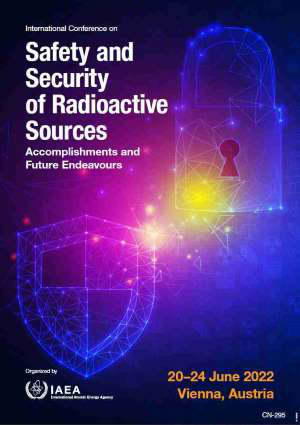Speaker
Description
The utilization of sealed radioactive sources, including the Cobalt-60 sealed sources for teletherapy activities, will generates a radioactive waste. According to the IAEA Nuclear Safety Standart Series No. GSG-1, the activity of disused Teletherapy Cobalt-60 sealed sources is about 100 TBq categorized as intermediate level waste (ILW). Several events in the world have shown that waste with such a high activity has the potential to be misused. Radioactive materials controlled by parties with malicious purposes can be used as dirty bomb, radiological dispersal device (RDD), radiological emission device (RED) or just sell it for economic profit. There were 189 incidents reported by 36 countries to the International Atomic Energy Agency (IAEA) and recorded in the Incident and Trafficking Database (ITDB). This indicates that the threat to the security of radioactive material, including incidents to be connected with trafficking or malicious use, is real. The total number of nuclear security events according to ITDB from 1993 to 31 December 2019 was 3,686 incidents. One method to anticipate a threats against radioactive materials during transport is by implementing a physical protection system in the Transport Security Plan (TSP). Physical protection systems can be implemented in the design of the transport container. This study was conducted to analyze what threats might occur to the disused Teletherapy Cobalt-60 sealed sources during the transportation process and the steps to anticipate it with container security.
The analysis in this study was carried out in accordance with the security of radioactive material transport model in IAEA Nuclear Security Series No. 9-G. There were 5 main steps in analysis consisting of characterization of radioactive sources to determine the security level; threat assessment; target identification; determination of security goals; and container security analysis. The characterization of radioactive sources was divided into two steps, which consist of determining the sources category and determining the security level of the transporting sources. Attack Tree Analysis is one method that is often used in security analysis. In its development, the method developed into an Attack-Defense Tree (ADTree) which is used not only for threat modeling but also for anticipating steps. Analysis using the ADTree method can be done in various ways, both quantitative and qualitative. Qualitative analysis can be done by calculating the success rate of the threat by the enemy. The results of the container security analysis were evaluated using the ADTree method to determine the level of success of the threat. The evaluation was carried out with the assumption that the enemy has started the action so that the initial probability is 100%. Then the probability was be lowered by the presence of security measures. The evaluation in this study was carried out using the ADTool software.
Disused Cobalt-60 sealed sources is categorized into level 1. According to BAPETEN’s Chairman Regulation Number 6 Year 2015, the security level applied to the category is enhanced security level with additional security measures. The potential action that can be a threat to the transportation of such waste is theft that can be done through 2 different scenarios, that is take the sources from the container or take along the container. Delay function of the transport container can reduce the success rate of theft to 0.24% that is categorized as very low level.
| Country OR Intl. Organization | Indonesia |
|---|

